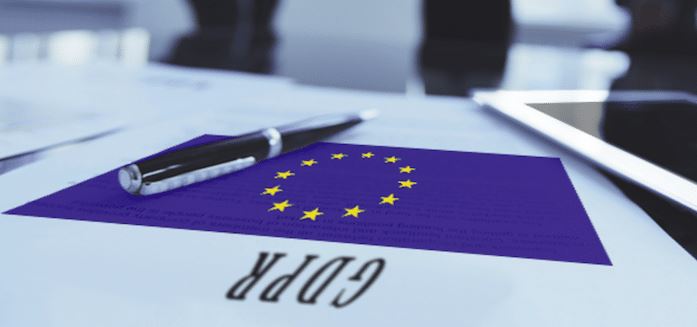
New legislation that came into force this summer, which will formally apply from 25th May 2018, is poised to turn the rules of engagement for B2B marketing on their head. The regulations will have a massive impact on your marketing data and what you can do with it, and will dictate a significant overhaul in how you engage existing and prospective customers. If you step out of line, your organisation could be hit with a fine of up to €20 million. That’s 20 million reasons why it’s important to prepare for the changes now – or risk running into disaster later.
What lies ahead?
The EU General Data Protection Regulation (GDPR) fundamentally changes how businesses can email potential and existing customers, and how they monitor online behaviour. The legislation, designed to establish a harmonised data protection framework across the EU, has two constituent parts. Firstly, you must have consent to use cookies on your website to track a person’s behavior. And secondly, you must have written consent to send someone an email.

The changes are particularly impactful in the UK, where we’ve traditionally adopted a ‘soft’ opt-in approach. This has meant, for example, that we can market to individuals we’ve exchanged business cards with or who have checked a box giving us permission to send information. And we can also buy lists of target customers and email them, so long as we provide an option to opt-out of receiving future information. But opt-out is being kicked out. The new legislation mandates the ‘double opt-in’ of all customers. In order to sign up for communications, subscribers need to confirm their opt-in by clicking a link in a confirmation email or responding to the confirmation email in some other way. We’ve been doing it this way in B2C marketing for years, but now the B2B world is being brought into line.
For the UK, it’s a beautiful irony: the nation that just opted out of the EU is now being forced to opt-in. And we won’t get a referendum to choose. In reality, Brexit will have little impact on the need to adopt the new rules. If you’re planning to do business with anyone in Europe, you’ve no choice but to comply.
What are the implications?
Fundamentally, your purchased data lists will diminish in quality and the new procedure will undoubtedly reduce the number of people with whom you can legally communicate. The sign-up process can appear onerous and if you ask for too much, too early, dropouts will inevitably occur, However, the size of your list can be a misleading metric; quality always trumps quantity. Evidence shows that opt-in data performs far better than blanket promotion; open rates are higher, engagement is better, and this drives increased click through and higher conversion rates. At CommuniGator, click through rates for opt-in data perform at 37%. That’s an impressive figure and one that proves, even without the ‘motivation’ of legislation, that opt-in is definitely the way to go.
What can you do?
You need to start the process of building your double opt-in lists right now – making the most of the opportunity to use the opt-out approach whilst it’s still allowed. The process should begin with your existing customers, along with subscribers to any newsletters or e-communications you currently produce. Remember, you’ll need legal consent to send continuous streams of marketing content to all your current contacts. It’s also worth revisiting any purchased lists you may previously have used. At the same time, it makes sense to update your customer contracts and T&Cs so that they include opt-in terminology, and redesigning your online processes to accommodate the new requirements. This may require you to examine your existing email marketing platform.

With the right technology and the right partner thought, it’s easy to short-circuit the process and start building high-value opt-in data immediately. The best technologies bring plug-and-play compliance to your digital marketing. The most effective partners offer specialist expertise to inform best practice. Ultimately, a permission-based opt-in list of your target market is extremely valuable. The time has come to develop one.
In the era of content-driven inbound marketing, email remains a powerful stimulus for lead generation and high-value marketing automation. Doing nothing now risks diminishing the future value of email marketing – and that’s something you really can’t afford to happen.






